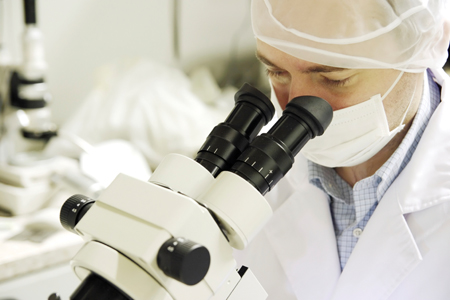Does QRM + RMM = Better EM?

Facilities perform environmental monitoring (EM) to demonstrate a state of control. EM can also help assess the effectiveness of a cleaning/disinfection program and identify data trends, which may allow early detection of potential microbiological problems.
A quality risk management (QRM) approach provides a holistic way to manage EM risks in a facility. Locations, sampled during room/equipment qualification, are evaluated during a risk assessment to identify the areas at greatest risk of introducing particulate or microbial contamination. Once these areas are identified, risk reduction activities can be conducted to concentrate sampling at those high-risk locations.
In addition, QRM is a perfect tool for integrating new, rapid monitoring methods (RMMs) that have been developed to improve sample throughput, reduce time delays, and assist in overall optimization of quality control operations. RMMs are one of the innovations within the pharmaceutical industry that offers a ways to improve product quality. They may also be employed to proactively monitor a process, rather than looking at what happened retrospectively.
The use of risk management approaches is an important cGMP topic in microbiological environmental monitoring. Microbiologists must consider each aspect of the environment and decide what level of monitoring best suits their systems, and then justify the techniques used and the locations selected. Some situations may require the ability to return to production in the shortest time possible or the ability to troubleshoot environmental conditions in real time. For example, immediate feedback on excursions allows detection of issues concurrently with process monitoring. The time necessary to investigate such an event can take hours using RMMs versus the days or weeks it takes to complete traditional, culture-based methods.
To promote innovation in the pharmaceutical industry, the U.S. FDA has launched a number of supporting initiatives, including:
- Pharmaceutical Current Good Manufacturing Practices (CGMPs) for the 21st Century: A Risk-Based Approach
- Advancement of Emerging Technologies to Modernize the Pharmaceutical Manufacturing Base
The goal of these initiatives is to modernize and improve the quality of pharmaceutical manufacturing processes, and encourage the industry to implement risk-based, continuous, real-time quality assurance.
[Editor’s Note: To learn more about how to apply QRM to new technologies like rapid methods, consider attending the PDA Education course, “Developing a Microbial Monitoring Plan and Leveraging New Technologies for Effective Sterility Assurance in Aseptic Processes,” Oct. 19 following the 13th Annual PDA Global Conference on Pharmaceutical Microbiology.]
New Tech Drives New Methods
Conventional microbiological methods, despite having served microbiologists well, have limitations including time-to-result, culturability, and the issue of “viable but nonculturable” microorganisms. Concerns over the limitations of conventional methods, as well as the possibilities afforded by technological advances, led to the emergence of a new generation of rapid and alternative microbiological methods. These comprise any microbiological technique or process that increases the speed or efficiency of isolating, culturing or identifying microorganisms when compared to conventional methods.
RMMs exploit chemical and physical methods to detect or quantify microorganisms. The development of instrumentation capable of providing continuous, real-time microbial monitoring has been facilitated by laser-induced fluorescence (LIF) technology. LIF uses a high-intensity light source (e.g., 405 nm laser) to induce light scatter and fluorescence in particles passing through a detection cell, resulting in the real-time detection of both inert particles and biologics like bacteria, yeasts, and molds. Air samples are drawn through an optical chamber and illuminated by a laser source; when any particle crosses the laser beam inside the particle flow path detection chamber, light-scattering occurs. Only particles containing fluorescent molecules, such as NADH and riboflavins—found in all microbial cells—can give a signal at a second detector. Dipicolinic acid (DPA), a molecule found in microbial spores, is also detected by this technology. Filters ensure that only the fluorescence of the appropriate wavelength is detected in the second detector and that the general, particle-scattered light does not interfere with this signal.
A number of pharmaceutical companies currently use these technologies during routine maintenance operations as a means of improving EM practices subsequent to shutdowns. RMMs used in these applications allow for a faster return to production, minimizing downtime and increasing manufacturing productivity. In addition, these methods can be extremely useful during investigations, as they can detect excursions during continuous monitoring with root cause identification in real time. As a result, the innovation of the pharmaceutical industry will be better equipped to understand production processes and the monitoring component that keeps quality at center stage.
Types of Rapid Monitoring Methods
Rapid or alternative methods can be categorized in different ways, like those based on the technology or applications outlined below.
Growth-Based Methods
In this category, a detectable signal is attained using electrochemical methods that involve biochemical or physiological measurements associated with microorganism growth. Examples include impedance microbiology (measurable electrical threshold during microbial growth) and the use of biochemical and carbohydrate substrates.
Direct Measurement
Generally, direct measurement uses viability stains and laser excitation to detect and quantify microorganisms without cell growth.
Cell Component Analysis
This approach uses the expression of specific cell components (ATP, endotoxin, proteins, surface macromolecules) to ascertain the presence of microbes indirectly, i.e., genotypic methods.
Optical Spectroscopy
Optical spectroscopy uses light-scattering, among other techniques, for microbial detection and allows for their quantification and identification. Particle-counter data generated using this method is often referred to as “real-time” data.
Nucleic Acid Amplification
PCR-DNA amplification, RNA-based reverse-transcriptase amplification, 16S rRNA typing and gene sequencing, all of which are commonly used for microbial identification, fall under this umbrella.
Micro-Electrical-Mechanical Systems (MEMS)
This small-scale technology employs the use of microarrays, biosensors and nanotechnology.
FDA Expectations for RMM Validation
Before a new rapid method can be implemented, the FDA recommends that firms reach out to the Agency to consider all aspects of its application. The current guidance on rapid method validation, including the recently revised Technical Report No. 33 (2013): Fundamentals of an Environmental Monitoring Program Chapter <1223> Validation of Alternative Microbiological Methods and Ph. Eur. Chapter 5.1.6, can serve as a starting point for discussions with the FDA. Developing a new validation strategy is possible, as long as it is scientifically sound and defensible. These guidance documents describe such validation basics as parameters and acceptance criteria. A variety of avenues are available for new qualification of a rapid method that can later be used to support the manufacturing of FDA-regulated drug product. If the rapid method is intended for use with a new product, it can be included as the method in an NDA or ANDA; however, if it will be used with an existing product, where the rapid method replaces a microbiology method included in the product’s original submission, it may be necessary to file a post-approval change or prior-approval supplement. Once approved, subsequent product filings are detailed in an Annual Product Report, which should include specific information about the rapid method.
Another option for managing the validation of the proposed rapid method is to file a comparability protocol (CP). A CP is a well-defined, detailed written plan for assessing the effect of specific CMC changes in the identity, strength, quality, purity and potency of a specific drug product as these factors relate to the safety and effectiveness of the product. As part of the prior approval supplement, the CP describes the changes that will be made, specifying the tests and studies that will be performed, the analytical procedures that will be used and the acceptance criteria that will be met to demonstrate that the specified CMC changes do not adversely affect the product. For rapid methods, the CP is a validation protocol demonstrating that the method is suitable for its intended use.
CPs can also be particularly useful for recurring changes, such as the application of a rapid method for multiple products or processes. The same CP can be used — without going through another review and approval process — to subsequently validate the same rapid method for additional products or samples, as long as the CP acceptance criteria are met. For instance, the same approved reduced reporting notification method can be used. In fact, a number of companies have already used these strategies for rapid method approvals associated with drug product sold in the United States.
For many rapid methods, the FDA encourages changes to be managed under the process analytical technology (PAT) model. A PAT submission will be assigned to a PAT Review and Inspection Team composed of CMC reviewers, compliance officers, etc. The PAT application can include a CP as well as pre- and/or post-approval inspections. Because the most appropriate regulatory strategy (e.g., PAT, CP or prior approval supplement) depends on the microbiology method being changed, the manner in which the method will be used and the product(s) that will be affected, the FDA strongly recommends that the proposed change be discussed with the Agency early in the implementation process. This is especially true for RMM changes that will impact in-process microbiology methods that are not included in an NDA or ANDA, as the implementation of the RMM may be better managed through a firm’s internal change control program rather than a formal regulatory process. In-process tests that may fall under this category include bioburden testing, purified water analyses and environmental monitoring.
The pharmaceutical industry has been called upon to raise sterility assurance standards through enhanced global regulatory guidances. A number of companies have invested in rapid methods that allow continuous real-time monitoring with a limit of detection down to a single microbial cell. Changes in environmental conditions can be seen immediately, decreasing risk, accelerating investigations and raising the bar for monitoring in pharmaceutical quality.



 Lisa G. Lawson, MS, has more than 25 years of experience supporting large and small pharmaceutical companies in contamination control, including cleaning and disinfection strategies, aseptic manufacturing and the use of risk-based approaches to microbiological quality challenges.
Lisa G. Lawson, MS, has more than 25 years of experience supporting large and small pharmaceutical companies in contamination control, including cleaning and disinfection strategies, aseptic manufacturing and the use of risk-based approaches to microbiological quality challenges.